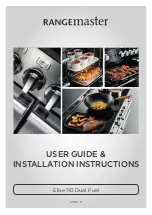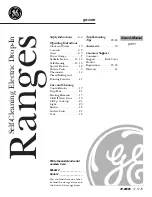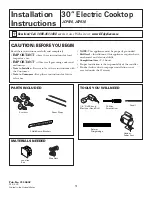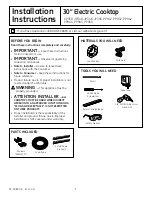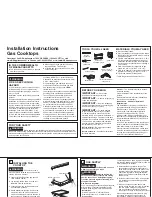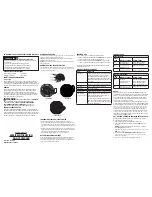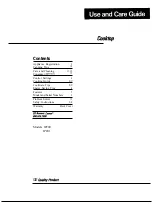
14
USEFUL COOKING TIPS
Cakes and bread:
• Heat the oven for at least 15 minutes before
you start cooking bread or cakes.
• Do not open the door during baking because
the cold air would stop the yeast from rising.
• When the cake is cooked turn the oven off and
leave it in for about 10 minutes.
• Do not use the enamelled oven tray or drip
pan, supplied with the oven, to cook cakes in.
• How do you know when the cake is cooked?
About 5 minutes before the end of cooking
time, put a cake tester or skewer in the highest
part of the cake. If it comes out clean the cake
is cooked.
• And if the cake sinks? The next time use less
liquids or lower the temperature 10°C.
• If the cake is too dry: Make some tiny holes
with a toothpick and pour some drops of fruit
juice or spirits on it. The next time, increase
the temperature 10°C and set a shorter
cooking time.
• If the cake is too dark on top: the next time put
the cake on a lower shelf, cook it at a lower
temperature and longer.
• If the top of the cake is burnt: cut off the burnt
layer and cover with sugar or decorate it with
cream, jam, confectioner’s cream, etc.
• If the cake is too dark underneath: the next
time place it on a higher shelf and cook it at a
lower temperature.
• If the cake or bread is cooked nicely outside
but is still uncooked inside: the next time use
less liquids, cook at a lower temperature and
longer.
• If the cake will not come out of the tin: slide a
knife around the edges, place a damp cloth
over the cake and turn the tin upside down.
The next time grease the tin well and sprinkle
it with flour or bread crumbs.
• If the biscuits will not come away from the
baking tray: put the tray back in the oven for
a while and lift the biscuits up before they
cool. The next time use a sheet of baking
parchment to prevent this happening again.
Meat:
• If, when cooking meat, the time needed is
more than 40 minutes, turn the oven off 10
minutes before the end of cooking time to
exploit the residual heat (energy saving).
• Your roast will be juicier if cooked in a closed
pan; it will be crispier if cooked without a lid.
• Normally white meat, poultry and fish need
medium temperatures (less than 200°C).
• To cook “rare” red meats, high temperatures
(over 200°C) and short cooking times are
needed.
• For a tasty roast, lard and spice the meat.
• If your roast is too dark on top or underneath:
the next time put it on a higher or lower shelf,
lower the temperature and cook longer.
• Your roast is underdone? Cut it in slices,
arrange the slices on a baking tray with the
gravy and finish cooking it.
Grilling:
• Sparingly grease and flavour the food before
grilling it.
• Always use the grill pan to catch the juices that
drip from the meat during grilling.
• Turn the food half way through cooking.
• If you are grilling fatty poultry (goose) pierce
the skin so the fat can drip away.
The aluminium can be easily corroded if it
comes into contact with organic acids present
in the foods or added during baking (vinegar,
lemon juice). Therefore it is advised not to put
directly the foods on aluminium or enamelled
trays, but ALWAYS use the proper oven paper.
INSTRUCTIONS FOR THE USER
Summary of Contents for BFD9156WX
Page 1: ...461308374 12 2014 Instruction Manual for BLANCO 90cm Freestanding Cooker BFD915WX...
Page 18: ...18 INSTRUCTIONS FOR THE USER...
Page 19: ...19 461308374 12 2014 INSTRUCTIONS FOR THE USER...
Page 20: ...20 INSTRUCTIONS FOR THE USER...
Page 30: ...30 TECHNICAL FEATURES...
Page 31: ...31 461308374 12 2014 TECHNICAL FEATURES...
Page 32: ...32 TECHNICAL FEATURES...
Page 34: ...34...
Page 36: ......






























